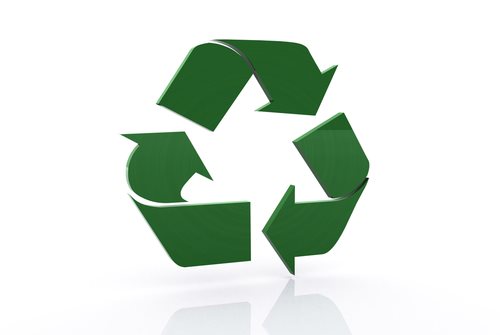
What is the National Environmental Policy Act?
The National Environmental Policy Act is a federal law that formally established a U.S. national policy responsible for promoting the enhancement of the environment. The National Environmental Policy Act, which was enacted on January 1st of 1970, also established the President’s Council on Environmental Quality.
The most significant effect of the National Environmental Policy Act came in the form of procedural requirements; the legislation instituted requirements for all agencies of the federal government in order to prepare Environmental Impact Statements and Environmental Assessments. These procedural requirements contain statements of the environmental effects of proposed—and subsequently instituted—federal agency actions. The National Environmental Policy Act’s procedural requirements apply to all agencies of the United States Federal Government’s Executive Branch. The National Environmental Policy Act; however, does not apply to the President, the federal courts or to Congress.
History of the National Environmental Policy Act:
The National Environmental policy Act of 1969 was enacted by the 91st United States Congress. The legislation came into existence following increasing public awareness and appreciation for the environment; growing concerning about the well-being of wildlife and ecosystems also contributed to the passing of the National Environmental Policy Act 1969.
Another major influence for enacting the national Environmental Policy Act were the freeway revolts that occurred in response to the construction of the Interstate Highway System—a project that required deforestation and the bulldozing of communities around the Nation. As a result of the public’s outcry following this project, the provisions of the National Environmental Policy Act were then applied to any subsequent federal, state or local project. Court rulings throughout the history of the National Environmental Policy Act have since expanded the regulations for NEPA-related studies or endeavors to include actions where permits for a federal agency are necessary, regardless of whether or not the project is federally funded. Although the act was enacted in 1970, the legislation is referred to as the “National Environmental Policy Act of 1969.”
Basic Information Concerning the National Environmental Policy Act:
The National Environmental Policy Act of 1969 establishes the national environmental policy and the coordinating goals for the protection, enhancement and maintenance of the environment. The National Environmental Policy Act of 1969 also provides a formal process for implementing these goals within the agencies of the United States Federal Government.
The National Environmental Policy Act contains three primary sections:
• The declaration of national policies and goals regarding the environment
• The establishment of action-forcing procedures and provisions; federal agencies are required to enforce these policies and goals.
• The formal establishment of a Council on Environmental Quality; this office is positioned within the Executive Office of the President.
The purpose of these sections is to ensure that environmental concerns are evaluated equally when compared to other factors in the decision making process of the coordinating federal agencies. The National Environmental Policy Act, to establish the nation’s environmental policy, offers a multidisciplinary approach to assessing environmental effects with regard to federal government decision making.
As stated above, the national Environmental Policy Act of 1969 formally established the President’s Council on Environmental Quality. This board was created to advise the President (and the Executive Branch) in the preparation of annual reports regarding the quality of the environment. These reports address the state of federal agencies and their actions concerning environmental quality.
The National Environmental Policy Act 0f 1969 is an action-forcing piece of legislation; violations of the laws do not carry criminal or civil actions. Enforcement of the Act is obtained through the process of the United States court system.
The National Environmental policy Act covers a number of federal agency actions; however, the legislation does not apply to wholly private or purely public state actions—such a provision denotes an absence of public influence or funding concerning a specific action.
Requirements of the National Environmental Policy Act:
Title I of the National Environmental Policy Act contains the Declaration of National Environmental policy, which mandates the federal government to use all means to create and subsequently maintain conditions under which humans and nature can exist in fecund harmony.
Section 102 of the National Environmental Policy Act requires all agencies of the Federal Government to incorporate environmental considerations in regards to planning and decision-making procedures through a systematic approach. More specifically, these agencies are required to prepare detailed statements to assess the environmental impact of and more efficient alternatives to federal actions that affect the environment. Title II of the National Environment Policy Act establishes the Council on Environmental Quality.
Information Regarding the Council on Environmental Quality:
The Council on Environmental Quality oversees the National Environmental Policy Act of 1969. The Council, which is headed by a Chairman, is responsible for fulfilling the following duties and functions:
• The Council on Environmental Quality gathers information concerning the conditions and trends regarding environmental quality
• Develops and promotes national policies to improve environmental quality
• Evaluates federal programs in conjunction with the foals established in Title I of the National Environmental Policy Act
• Conducts studies, research, analyses and surveys relating to environmental quality and the nation’s ecosystems.
The National Environmental Policy Act’s Process:
The process aligned with the National Environmental Process consists of an evaluation of the effects of a federal undertaking and alternative procedures in alignment with the environment. There are three levels of evaluation within the National Environmental Policy Act: preparation of an environmental assessment; categorical exclusion of determination; and a preparation of environmental impact statements.
Categorical exclusions represent the first level of the National Environmental Policy’s Process. At this level, an undertaking may be excluded from the government’s environmental analysis, only if certain criterion, with which a federal agency has previously determined as ineffective, is met. Several federal agencies utilize lists of actions that are categorically excluded from environmental evaluation under the National Environmental Policy Act of 1969.
The Environmental Assessment/finding of no significant impact level of evaluation requires a federal agency to prepare a written environmental assessment in order to determine whether a federal undertaking would significantly affect the environment. If the evaluation yields inconclusive evidence, the underlying agency will issue a finding of “no significant impact.” The “finding of no significant impact” may address procedures which an agency will take to disrupt or mitigate potentially significant impacts.
The third level of analysis, the preparation of an environmental impact statement, is affirmed if the environmental consequences of a federal undertaking are deemed significant. An environmental impact statement is a detailed evaluation of the proposed action and its alternatives. If the agency anticipates that a procedure may impact the environment or if the undertaking is considered controversial, the agency may choose to prepare an environmental impact statement without having to prepare an environmental assessment.
The Role of the Federal Government:
The exact role of a federal agency within the National Environmental Policy Act will depend on the entity’s relationship and expertise to the proposed undertaking. That being said, the agency carrying out the action is responsible for complying with the requirements listed under the National Environmental Policy Act of 1969.
In some cases, multiple federal agencies will be involved with the process; in this situation, a lead agency will be designated to supervise preparation of the analysis.
Any federal state or local agency in possession of special expertise with regard to an environmental concern may be considered a cooperating agency in the National Environmental Policy Act’s process. Cooperating agencies have the responsibility to assist lead agencies by participating in the legislation’s process.
Full Text of the Environmental Policy Act of 1969:
The National Environmental Policy Act of 1969, as amended
(Pub. L. 91-190, 42 U.S.C. 4321-4347, January 1, 1970, as amended by Pub. L. 94-52, July 3, 1975, Pub. L. 94-83, August 9, 1975, and Pub. L. 97-258, § 4(b), Sept. 13, 1982)
An Act to establish a national policy for the environment, to provide for the establishment of a Council on Environmental Quality, and for other purposes.
Be it enacted by the Senate and House of Representatives of the United States of America in Congress assembled, That this Act may be cited as the “National Environmental Policy Act of 1969.”
Purpose
Sec. 2 [42 USC § 4321].
The purposes of this Act are: To declare a national policy which will encourage productive and enjoyable harmony between man and his environment; to promote efforts which will prevent or eliminate damage to the environment and biosphere and stimulate the health and welfare of man; to enrich the understanding of the ecological systems and natural resources important to the Nation; and to establish a Council on Environmental Quality.
TITLE I
CONGRESSIONAL DECLARATION OF NATIONAL ENVIRONMENTAL POLICY
Sec. 101 [42 USC § 4331].
(a) The Congress, recognizing the profound impact of man’s activity on the interrelations of all components of the natural environment, particularly the profound influences of population growth, high-density urbanization, industrial expansion, resource exploitation, and new and expanding technological advances and recognizing further the critical importance of restoring and maintaining environmental quality to the overall welfare and development of man, declares that it is the continuing policy of the Federal Government, in cooperation with State and local governments, and other concerned public and private organizations, to use all practicable means and measures, including financial and technical assistance, in a manner calculated to foster and promote the general welfare, to create and maintain conditions under which man and nature can exist in productive harmony, and fulfill the social, economic, and other requirements of present and future generations of Americans.
(b) In order to carry out the policy set forth in this Act, it is the continuing responsibility of the Federal Government to use all practicable means, consistent with other essential considerations of national policy, to improve and coordinate Federal plans, functions, programs, and resources to the end that the Nation may –
1. fulfill the responsibilities of each generation as trustee of the environment for succeeding generations;
2. assure for all Americans safe, healthful, productive, and aesthetically and culturally pleasing surroundings;
3. attain the widest range of beneficial uses of the environment without degradation, risk to health or safety, or other undesirable and unintended consequences;
4. preserve important historic, cultural, and natural aspects of our national heritage, and maintain, wherever possible, an environment which supports diversity, and variety of individual choice;
5. achieve a balance between population and resource use which will permit high standards of living and a wide sharing of life’s amenities; and
6. enhance the quality of renewable resources and approach the maximum attainable recycling of depletable resources.
(c) The Congress recognizes that each person should enjoy a healthful environment and that each person has a responsibility to contribute to the preservation and enhancement of the environment.
Sec. 102 [42 USC § 4332].
The Congress authorizes and directs that, to the fullest extent possible: (1) the policies, regulations, and public laws of the United States shall be interpreted and administered in accordance with the policies set forth in this Act, and (2) all agencies of the Federal Government shall –
(A) utilize a systematic, interdisciplinary approach which will insure the integrated use of the natural and social sciences and the environmental design arts in planning and in decisionmaking which may have an impact on man’s environment;
(B) identify and develop methods and procedures, in consultation with the Council on Environmental Quality established by title II of this Act, which will insure that presently unquantified environmental amenities and values may be given appropriate consideration in decisionmaking along with economic and technical considerations;
(C) include in every recommendation or report on proposals for legislation and other major Federal actions significantly affecting the quality of the human environment, a detailed statement by the responsible official on –
(i) the environmental impact of the proposed action,
(ii) any adverse environmental effects which cannot be avoided should the proposal be implemented,
(iii) alternatives to the proposed action,
(iv) the relationship between local short-term uses of man’s environment and the maintenance and enhancement of long-term productivity, and
(v) any irreversible and irretrievable commitments of resources which would be involved in the proposed action should it be implemented.
Prior to making any detailed statement, the responsible Federal official shall consult with and obtain the comments of any Federal agency which has jurisdiction by law or special expertise with respect to any environmental impact involved. Copies of such statement and the comments and views of the appropriate Federal, State, and local agencies, which are authorized to develop and enforce environmental standards, shall be made available to the President, the Council on Environmental Quality and to the public as provided by section 552 of title 5, United States Code, and shall accompany the proposal through the existing agency review processes;
(D) Any detailed statement required under subparagraph (C) after January 1, 1970, for any major Federal action funded under a program of grants to States shall not be deemed to be legally insufficient solely by reason of having been prepared by a State agency or official, if:
(i) the State agency or official has statewide jurisdiction and has the responsibility for such action,
(ii) the responsible Federal official furnishes guidance and participates in such preparation,
(iii) the responsible Federal official independently evaluates such statement prior to its approval and adoption, and
(iv) after January 1, 1976, the responsible Federal official provides early notification to, and solicits the views of, any other State or any Federal land management entity of any action or any alternative thereto which may have significant impacts upon such State or affected Federal land management entity and, if there is any disagreement on such impacts, prepares a written assessment of such impacts and views for incorporation into such detailed statement.
The procedures in this subparagraph shall not relieve the Federal official of his responsibilities for the scope, objectivity, and content of the entire statement or of any other responsibility under this Act; and further, this subparagraph does not affect the legal sufficiency of statements prepared by State agencies with less than statewide jurisdiction.
(E) study, develop, and describe appropriate alternatives to recommended courses of action in any proposal which involves unresolved conflicts concerning alternative uses of available resources;
(F) recognize the worldwide and long-range character of environmental problems and, where consistent with the foreign policy of the United States, lend appropriate support to initiatives, resolutions, and programs designed to maximize international cooperation in anticipating and preventing a decline in the quality of mankind’s world environment;
(G) make available to States, counties, municipalities, institutions, and individuals, advice and information useful in restoring, maintaining, and enhancing the quality of the environment;
(H) initiate and utilize ecological information in the planning and development of resource-oriented projects; and
(I) assist the Council on Environmental Quality established by title II of this Act.
Sec. 103 [42 USC § 4333].
All agencies of the Federal Government shall review their present statutory authority, administrative regulations, and current policies and procedures for the purpose of determining whether there are any deficiencies or inconsistencies therein which prohibit full compliance with the purposes and provisions of this Act and shall propose to the President not later than July 1, 1971, such measures as may be necessary to bring their authority and policies into conformity with the intent, purposes, and procedures set forth in this Act.
Sec. 104 [42 USC § 4334].
Nothing in section 102 [42 USC § 4332] or 103 [42 USC § 4333] shall in any way affect the specific statutory obligations of any Federal agency (1) to comply with criteria or standards of environmental quality, (2) to coordinate or consult with any other Federal or State agency, or (3) to act, or refrain from acting contingent upon the recommendations or certification of any other Federal or State agency.
Sec. 105 [42 USC § 4335].
The policies and goals set forth in this Act are supplementary to those set forth in existing authorizations of Federal agencies.
TITLE II
COUNCIL ON ENVIRONMENTAL QUALITY
Sec. 201 [42 USC § 4341].
The President shall transmit to the Congress annually beginning July 1, 1970, an Environmental Quality Report (hereinafter referred to as the “report”) which shall set forth (1) the status and condition of the major natural, manmade, or altered environmental classes of the Nation, including, but not limited to, the air, the aquatic, including marine, estuarine, and fresh water, and the terrestrial environment, including, but not limited to, the forest, dryland, wetland, range, urban, suburban an rural environment; (2) current and foreseeable trends in the quality, management and utilization of such environments and the effects of those trends on the social, economic, and other requirements of the Nation; (3) the adequacy of available natural resources for fulfilling human and economic requirements of the Nation in the light of expected population pressures; (4) a review of the programs and activities (including regulatory activities) of the Federal Government, the State and local governments, and nongovernmental entities or individuals with particular reference to their effect on the environment and on the conservation, development and utilization of natural resources; and (5) a program for remedying the deficiencies of existing programs and activities, together with recommendations for legislation.
Sec. 202 [42 USC § 4342].
There is created in the Executive Office of the President a Council on Environmental Quality (hereinafter referred to as the “Council”). The Council shall be composed of three members who shall be appointed by the President to serve at his pleasure, by and with the advice and consent of the Senate. The President shall designate one of the members of the Council to serve as Chairman. Each member shall be a person who, as a result of his training, experience, and attainments, is exceptionally well qualified to analyze and interpret environmental trends and information of all kinds; to appraise programs and activities of the Federal Government in the light of the policy set forth in title I of this Act; to be conscious of and responsive to the scientific, economic, social, aesthetic, and cultural needs and interests of the Nation; and to formulate and recommend national policies to promote the improvement of the quality of the environment.
Sec. 203 [42 USC § 4343].
(a) The Council may employ such officers and employees as may be necessary to carry out its functions under this Act. In addition, the Council may employ and fix the compensation of such experts and consultants as may be necessary for the carrying out of its functions under this Act, in accordance with section 3109 of title 5, United States Code (but without regard to the last sentence thereof).
(b) Notwithstanding section 1342 of Title 31, the Council may accept and employ voluntary and uncompensated services in furtherance of the purposes of the Council.
Sec. 204 [42 USC § 4344].
It shall be the duty and function of the Council –
1. to assist and advise the President in the preparation of the Environmental Quality Report required by section 201 [42 USC § 4341] of this title;
2. to gather timely and authoritative information concerning the conditions and trends in the quality of the environment both current and prospective, to analyze and interpret such information for the purpose of determining whether such conditions and trends are interfering, or are likely to interfere, with the achievement of the policy set forth in title I of this Act, and to compile and submit to the President studies relating to such conditions and trends;
3. to review and appraise the various programs and activities of the Federal Government in the light of the policy set forth in title I of this Act for the purpose of determining the extent to which such programs and activities are contributing to the achievement of such policy, and to make recommendations to the President with respect thereto;
4. to develop and recommend to the President national policies to foster and promote the improvement of environmental quality to meet the conservation, social, economic, health, and other requirements and goals of the Nation;
5. to conduct investigations, studies, surveys, research, and analyses relating to ecological systems and environmental quality;
6. to document and define changes in the natural environment, including the plant and animal systems, and to accumulate necessary data and other information for a continuing analysis of these changes or trends and an interpretation of their underlying causes;
7. to report at least once each year to the President on the state and condition of the environment; and
8. to make and furnish such studies, reports thereon, and recommendations with respect to matters of policy and legislation as the President may request.
Sec. 205 [42 USC § 4345].
In exercising its powers, functions, and duties under this Act, the Council shall –
1. consult with the Citizens’ Advisory Committee on Environmental Quality established by Executive Order No. 11472, dated May 29, 1969, and with such representatives of science, industry, agriculture, labor, conservation organizations, State and local governments and other groups, as it deems advisable; and
2. utilize, to the fullest extent possible, the services, facilities and information (including statistical information) of public and private agencies and organizations, and individuals, in order that duplication of effort and expense may be avoided, thus assuring that the Council’s activities will not unnecessarily overlap or conflict with similar activities authorized by law and performed by established agencies.
Sec. 206 [42 USC § 4346].
Members of the Council shall serve full time and the Chairman of the Council shall be compensated at the rate provided for Level II of the Executive Schedule Pay Rates [5 USC § 5313]. The other members of the Council shall be compensated at the rate provided for Level IV of the Executive Schedule Pay Rates [5 USC § 5315].
Sec. 207 [42 USC § 4346a].
The Council may accept reimbursements from any private nonprofit organization or from any department, agency, or instrumentality of the Federal Government, any State, or local government, for the reasonable travel expenses incurred by an officer or employee of the Council in connection with his attendance at any conference, seminar, or similar meeting conducted for the benefit of the Council.
Sec. 208 [42 USC § 4346b].
The Council may make expenditures in support of its international activities, including expenditures for: (1) international travel; (2) activities in implementation of international agreements; and (3) the support of international exchange programs in the United States and in foreign countries.
Sec. 209 [42 USC § 4347].
There are authorized to be appropriated to carry out the provisions of this chapter not to exceed $300,000 for fiscal year 1970, $700,000 for fiscal year 1971, and $1,000,000 for each fiscal year thereafter.
The Environmental Quality Improvement Act, as amended (Pub. L. No. 91- 224, Title II, April 3, 1970; Pub. L. No. 97-258, September 13, 1982; and Pub. L. No. 98-581, October 30, 1984.
42 USC § 4372.
(a) There is established in the Executive Office of the President an office to be known as the Office of Environmental Quality (hereafter in this chapter referred to as the “Office”). The Chairman of the Council on Environmental Quality established by Public Law 91-190 shall be the Director of the Office. There shall be in the Office a Deputy Director who shall be appointed by the President, by and with the advice and consent of the Senate.
(b) The compensation of the Deputy Director shall be fixed by the President at a rate not in excess of the annual rate of compensation payable to the Deputy Director of the Office of Management and Budget.
(c) The Director is authorized to employ such officers and employees (including experts and consultants) as may be necessary to enable the Office to carry out its functions ;under this chapter and Public Law 91-190, except that he may employ no more than ten specialists and other experts without regard to the provisions of Title 5, governing appointments in the competitive service, and pay such specialists and experts without regard to the provisions of chapter 51 and subchapter III of chapter 53 of such title relating to classification and General Schedule pay rates, but no such specialist or expert shall be paid at a rate in excess of the maximum rate for GS-18 of the General Schedule under section 5332 of Title 5.
(d) In carrying out his functions the Director shall assist and advise the President on policies and programs of the Federal Government affecting environmental quality by –
1. providing the professional and administrative staff and support for the Council on Environmental Quality established by Public Law 91- 190;
2. assisting the Federal agencies and departments in appraising the effectiveness of existing and proposed facilities, programs, policies, and activities of the Federal Government, and those specific major projects designated by the President which do not require individual project authorization by Congress, which affect environmental quality;
3. reviewing the adequacy of existing systems for monitoring and predicting environmental changes in order to achieve effective coverage and efficient use of research facilities and other resources;
4. promoting the advancement of scientific knowledge of the effects of actions and technology on the environment and encouraging the development of the means to prevent or reduce adverse effects that endanger the health and well-being of man;
5. assisting in coordinating among the Federal departments and agencies those programs and activities which affect, protect, and improve environmental quality;
6. assisting the Federal departments and agencies in the development and interrelationship of environmental quality criteria and standards established throughout the Federal Government;
7. collecting, collating, analyzing, and interpreting data and information on environmental quality, ecological research, and evaluation.
(e) The Director is authorized to contract with public or private agencies, institutions, and organizations and with individuals without regard to section 3324(a) and (b) of Title 31 and section 5 of Title 41 in carrying out his functions.
42 USC § 4373. Each Environmental Quality Report required by Public Law 91-190 shall, upon transmittal to Congress, be referred to each standing committee having jurisdiction over any part of the subject matter of the Report.
42 USC § 4374. There are hereby authorized to be appropriated for the operations of the Office of Environmental Quality and the Council on Environmental Quality not to exceed the following sums for the following fiscal years which sums are in addition to those contained in Public Law 91- 190:
(a) $2,126,000 for the fiscal year ending September 30, 1979.
(b) $3,000,000 for the fiscal years ending September 30, 1980, and September 30, 1981.
(c) $44,000 for the fiscal years ending September 30, 1982, 1983, and 1984.
(d) $480,000 for each of the fiscal years ending September 30, 1985 and 1986.
42 USC § 4375.
(a) There is established an Office of Environmental Quality Management Fund (hereinafter referred to as the “Fund”) to receive advance payments from other agencies or accounts that may be used solely to finance –
1. study contracts that are jointly sponsored by the Office and one or more other Federal agencies; and
2. Federal interagency environmental projects (including task forces) in which the Office participates.
(b) Any study contract or project that is to be financed under subsection (a) of this section may be initiated only with the approval of the Director.
(c) The Director shall promulgate regulations setting forth policies and procedures for operation of the Fund.































